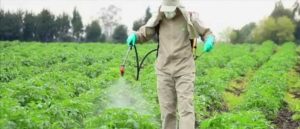Basic Information about Pesticide Ingredients
- Antimicrobials control germs and microbes such as bacteria and viruses.
- Biopesticides are made of living things, come from living things, or they are found in nature..
- Desiccants are used to dry up living plant tissues..
- Disinfectants control germs and microbes such as bacteria and viruses.
- Foggers (total release foggers) are used to kill insects that are in the open and touch the pesticides..
- Fungicides are used to control fungal problems like molds, mildew, and rust.
- Herbicides kill or inhibit the growth of unwanted plants, aka weeds.
- Illegal and Counterfeit Pesticides are imported or sold illegally
- Insecticides are used to control insects.
- Illegal and Counterfeit Pesticides are imported or sold illegally.
- Insecticides are used to control insects.
- Insect Growth Regulators disrupt the growth and reproduction of insects..
- Minimum Risk Pesticides are exempt from EPA registration, but many states require them to be registered.
- Miticides control mites that feed on plants and animals. Mites are not insects, exactly.
- Molluscicides are designed to control slugs, snails and other molluscs.
- Mothballs are insecticides used to kill fabric pests by fumigation in sealed containers.
- Natural and Biological Pesticides control pests using things found in nature, or man-made versions of things found in nature.
- Ovicides are used to control eggs of insects and mites..
- Pheromones are biologically active chemicals used to attract insects or disrupt their mating behavior. The ratio of chemicals in the mixture is often species-specific.
- Plant Growth Regulators are used to alter the growth of plants. For example, they may induce or delay flowering.
- Repellents are designed to repel unwanted pests, often by taste or smell.
- Rodenticides are used to kills rodents like mice, rats, and gophers.
- Synergists make certain pesticides more effective, but they are not effective when used alone.
- Wood Preservatives are used to make wood resistant to insects, fungus and other pests.

 A pesticide is any substance used to kill, repel, or control certain forms of plant or animal life that are considered to be pests. Pesticides include herbicides for destroying weeds and other unwanted vegetation, insecticides for controlling a wide variety of insects, fungicides used to prevent the growth of molds and mildew, disinfectants for preventing the spread of bacteria, and compounds used to control mice and rats. Because of the widespread use of agricultural chemicals in food production, people are exposed to low levels of pesticide residues through their diets. Scientists do not yet have a clear understanding of the health effects of these pesticide residues. The Agricultural Health Study, an ongoing study of pesticide exposures in farm families, also posts results online. Other evidence suggests that children are particularly susceptible to adverse effects from exposure to pesticides, including neurodevelopmental effects. People may also be exposed to pesticides used in a variety of settings including homes, schools, hospitals, and workplaces.
A pesticide is any substance used to kill, repel, or control certain forms of plant or animal life that are considered to be pests. Pesticides include herbicides for destroying weeds and other unwanted vegetation, insecticides for controlling a wide variety of insects, fungicides used to prevent the growth of molds and mildew, disinfectants for preventing the spread of bacteria, and compounds used to control mice and rats. Because of the widespread use of agricultural chemicals in food production, people are exposed to low levels of pesticide residues through their diets. Scientists do not yet have a clear understanding of the health effects of these pesticide residues. The Agricultural Health Study, an ongoing study of pesticide exposures in farm families, also posts results online. Other evidence suggests that children are particularly susceptible to adverse effects from exposure to pesticides, including neurodevelopmental effects. People may also be exposed to pesticides used in a variety of settings including homes, schools, hospitals, and workplaces.
Types of Pesticides
There are many different types of pesticides, each is meant to be effective against specific pests. The term "-cide" comes from the Latin word "to kill.Algaecides are used for killing and/or slowing the growth of algae.
